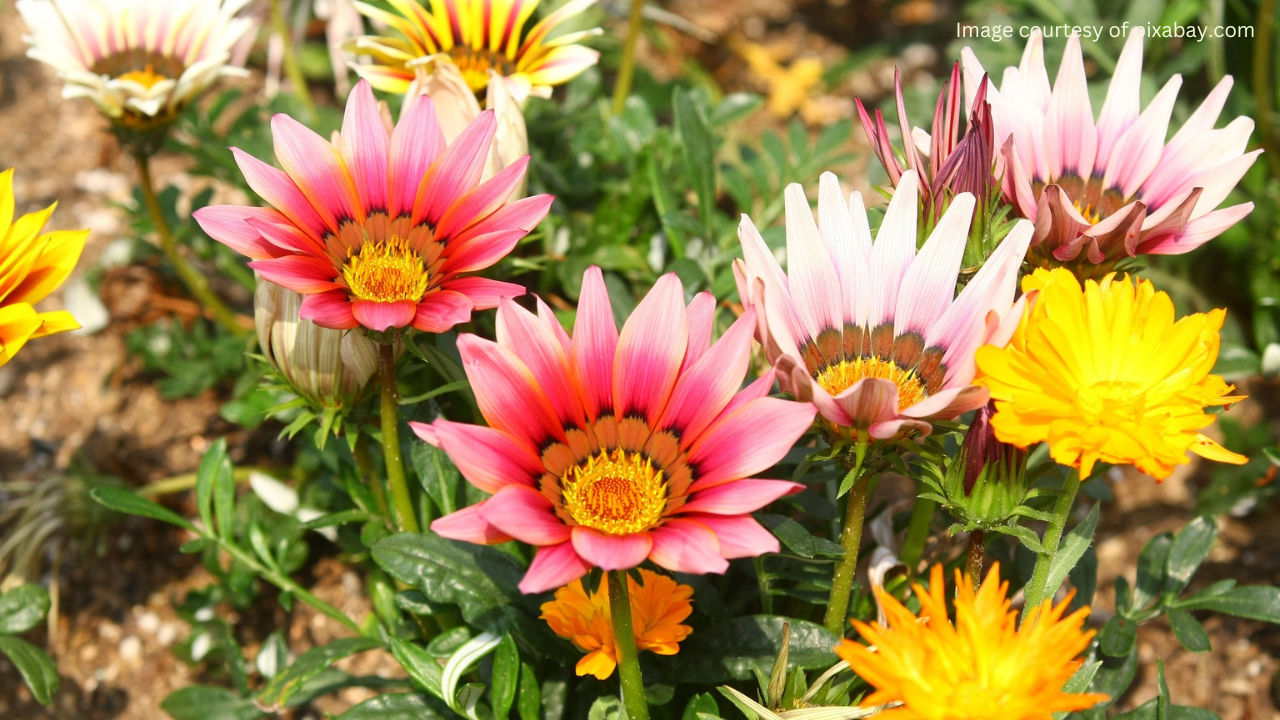Gazania flowers, also known as treasure flowers, are native to South Africa and belong to the Asteraceae family. They are prized for their daisy-like blooms that come in a range of colors including yellow, orange, pink, and red. These low-maintenance annuals or perennials thrive in sunny locations with well-drained soil, making them ideal for rock gardens, borders, and containers.
Choosing the Right Seeds
When selecting gazania seeds, opt for high-quality seeds from reputable suppliers. Look for seeds that are fresh and plump, as older or damaged seeds may have a lower germination rate. Additionally, consider the variety of gazania you wish to grow, as there are numerous cultivars available with varying colors and characteristics.
Preparing the Soil
Before planting gazania seeds, prepare the soil by ensuring it is well-drained and loose. Amend heavy clay or compacted soil with organic matter such as compost or peat moss to improve drainage and fertility. Gazanias prefer slightly acidic to neutral soil with a pH level between 6.0 and 7.0.

Planting Gazania Seeds
Plant gazania seeds directly into the soil once all danger of frost has passed and the soil has warmed up. Choose a sunny location with at least 6-8 hours of direct sunlight per day. Scatter the seeds lightly over the soil surface, then gently press them into the soil to ensure good seed-to-soil contact. Avoid covering the seeds with soil, as they require light to germinate.
Providing Optimal Growing Conditions
Gazania flowers thrive in warm, sunny conditions and are drought-tolerant once established. Water newly planted seeds lightly to keep the soil evenly moist until germination occurs. Once seedlings emerge, gradually reduce watering frequency, allowing the soil to dry out slightly between waterings.
Watering and Fertilizing
During the growing season, water gazania plants deeply but infrequently, allowing the soil to dry out between waterings to prevent root rot. Avoid overhead watering, as wet foliage can increase the risk of fungal diseases. Fertilize gazanias with a balanced, water-soluble fertilizer every 4-6 weeks to promote healthy growth and prolific flowering.
Managing Pests and Diseases
Gazania flowers are relatively pest and disease-resistant, but they may occasionally be affected by aphids, spider mites, or powdery mildew. Monitor plants regularly for signs of pests or diseases, and treat infestations promptly with insecticidal soap or neem oil. Remove and dispose of any infected plant material to prevent the spread of disease.
Pruning for Health and Beauty
To encourage bushy growth and prolonged flowering, pinch back gazania plants when they are young to promote branching. Deadhead spent flowers regularly to encourage continuous blooming throughout the growing season. Trim back any leggy or overgrown stems to maintain a compact, tidy appearance.
Supporting Growth with Mulching
Apply a layer of organic mulch such as shredded bark or straw around gazania plants to help retain soil moisture, suppress weeds, and regulate soil temperature. Mulching also helps to protect the roots from temperature extremes and reduces the need for frequent watering.
Monitoring Growth and Development
Keep a close eye on your gazania plants as they grow, monitoring for signs of stress, nutrient deficiencies, or pest problems. Adjust watering, fertilizing, and other care practices as needed to ensure optimal growth and development. Regularly inspect plants for signs of flowering and deadheading as necessary to promote continuous blooming.
Propagation and Division
Gazania flowers can be easily propagated from seeds, but they can also be propagated through division. Divide established plants in the spring or fall by carefully digging up the root ball and separating the individual clumps. Replant the divisions in well-prepared soil and water thoroughly to encourage rapid establishment.
Tips for Extending Blooming Season
To extend the blooming season of your gazania flowers, deadhead spent blooms regularly to encourage the production of new flowers. Provide adequate water and fertilization throughout the growing season to promote healthy growth and prolific flowering. Consider planting a mix of early, mid, and late-season varieties to ensure a continuous display of color throughout the summer months.
Harvesting Seeds for Future Planting
Allow some of your gazania flowers to mature and produce seeds towards the end of the growing season. Once the seed heads have dried and turned brown, carefully collect the seeds and store them in a cool, dry place until you are ready to plant them the following year. Label the seeds with the variety and date of collection for easy identification.
Related Articles:

